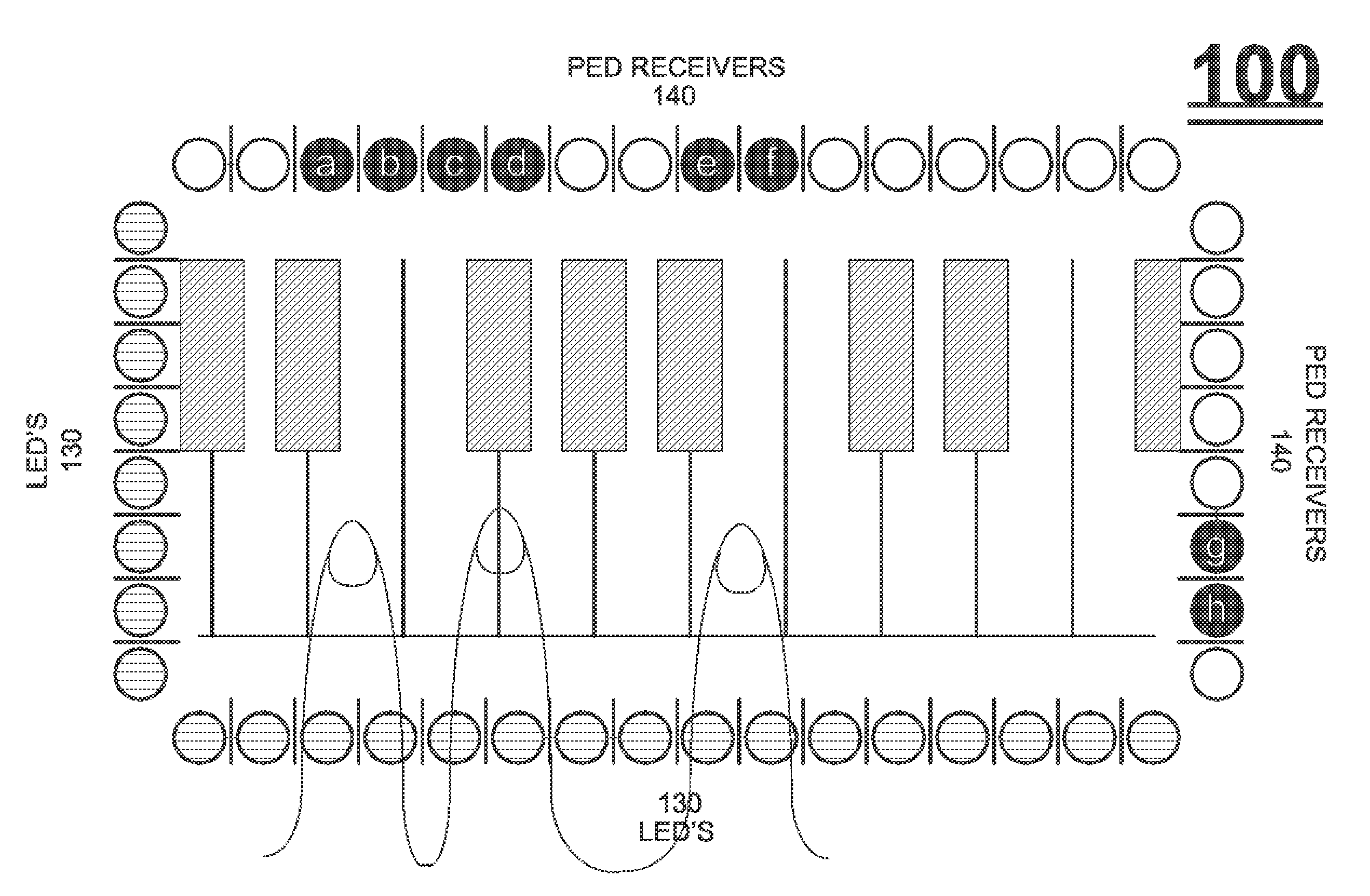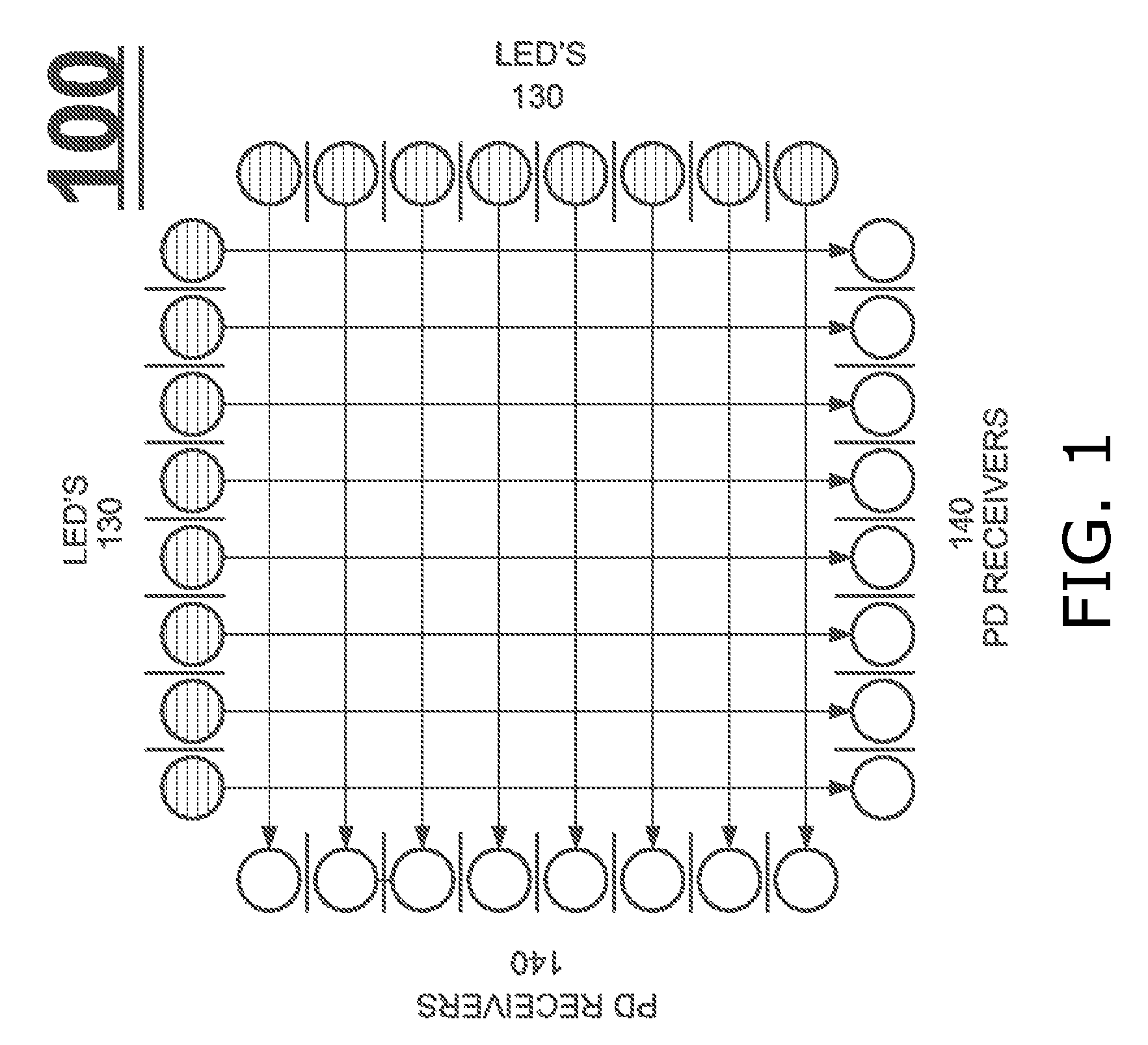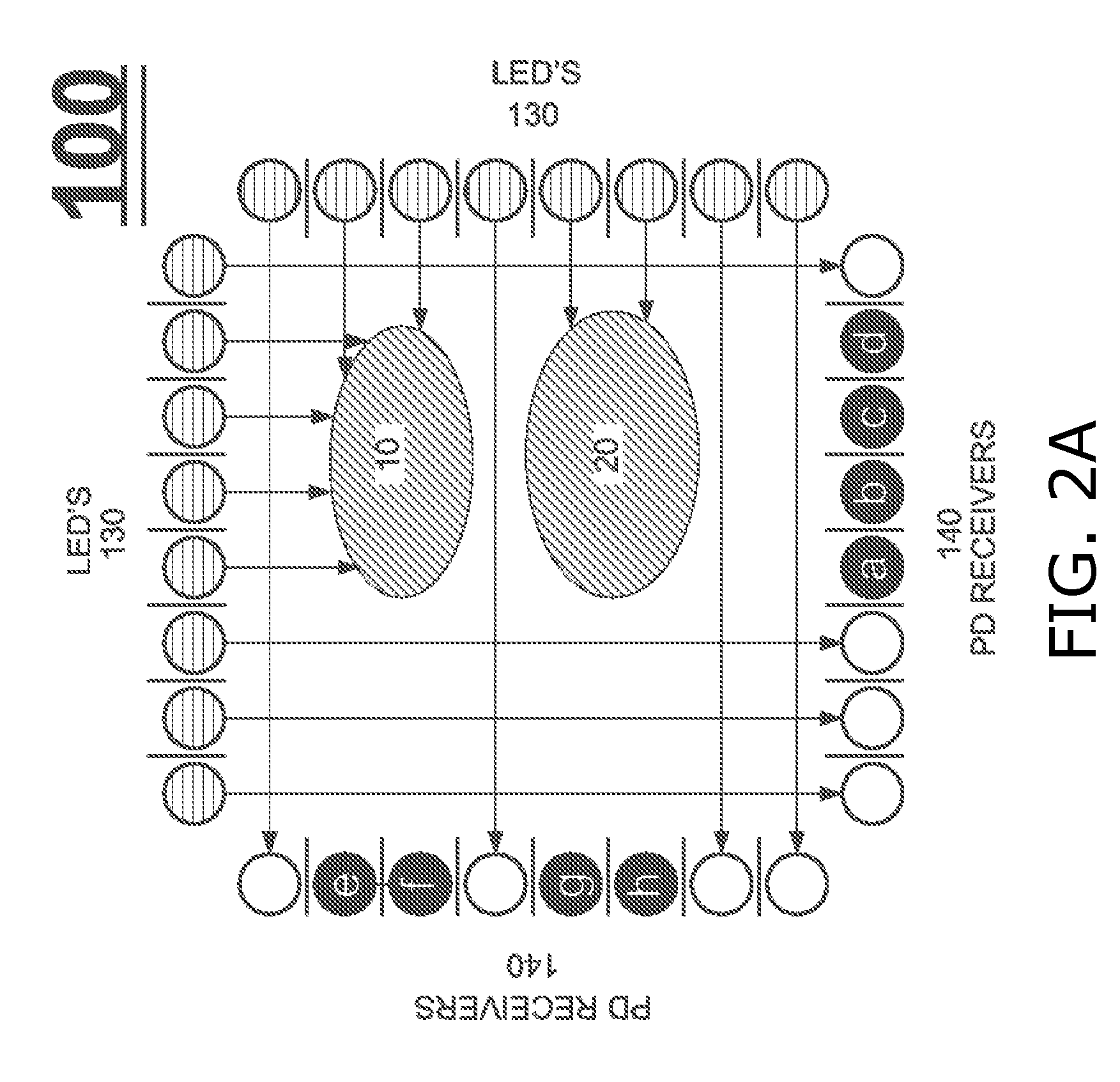Light-based touch screen
a touch screen and light-based technology, applied in computing, instruments, electric digital data processing, etc., can solve the problems of inability to accurately interpret inputs, limited touch screen types, and limited inputs of users, so as to reduce the number of io connectors required and reduce the cost of materials for the touch screen
- Summary
- Abstract
- Description
- Claims
- Application Information
AI Technical Summary
Benefits of technology
Problems solved by technology
Method used
Image
Examples
Embodiment Construction
[0060]Aspects of the present invention relate to light-based touch screens. According to embodiments of the present invention, a light-based touch screen includes a plurality of infra-red light-emitting diodes (LEDs) and a plurality of photodiodes (PDs) arranged along the perimeter surrounding the screen. The LEDs project light substantially parallel to the screen surface, and this light is detected by the PDs. An object, such as a finger, placed over a portion of the screen blocks some of the light beams, and correspondingly some of the PDs detect less light intensity. The geometry of the locations of the PDs, and the light intensities they detect, suffice to determine screen coordinates of the object. The LEDs and PDs are controlled for selective activation and de-activation by a controller. Generally, each LED and PD has I / O connectors, and signals are transmitted to specify which LEDs and which PDs are activated.
[0061]In one embodiment of the present invention, plural LEDs are a...
PUM
 Login to View More
Login to View More Abstract
Description
Claims
Application Information
 Login to View More
Login to View More - R&D
- Intellectual Property
- Life Sciences
- Materials
- Tech Scout
- Unparalleled Data Quality
- Higher Quality Content
- 60% Fewer Hallucinations
Browse by: Latest US Patents, China's latest patents, Technical Efficacy Thesaurus, Application Domain, Technology Topic, Popular Technical Reports.
© 2025 PatSnap. All rights reserved.Legal|Privacy policy|Modern Slavery Act Transparency Statement|Sitemap|About US| Contact US: help@patsnap.com



